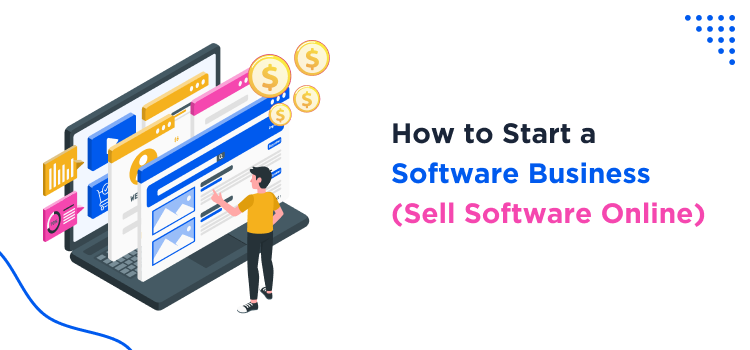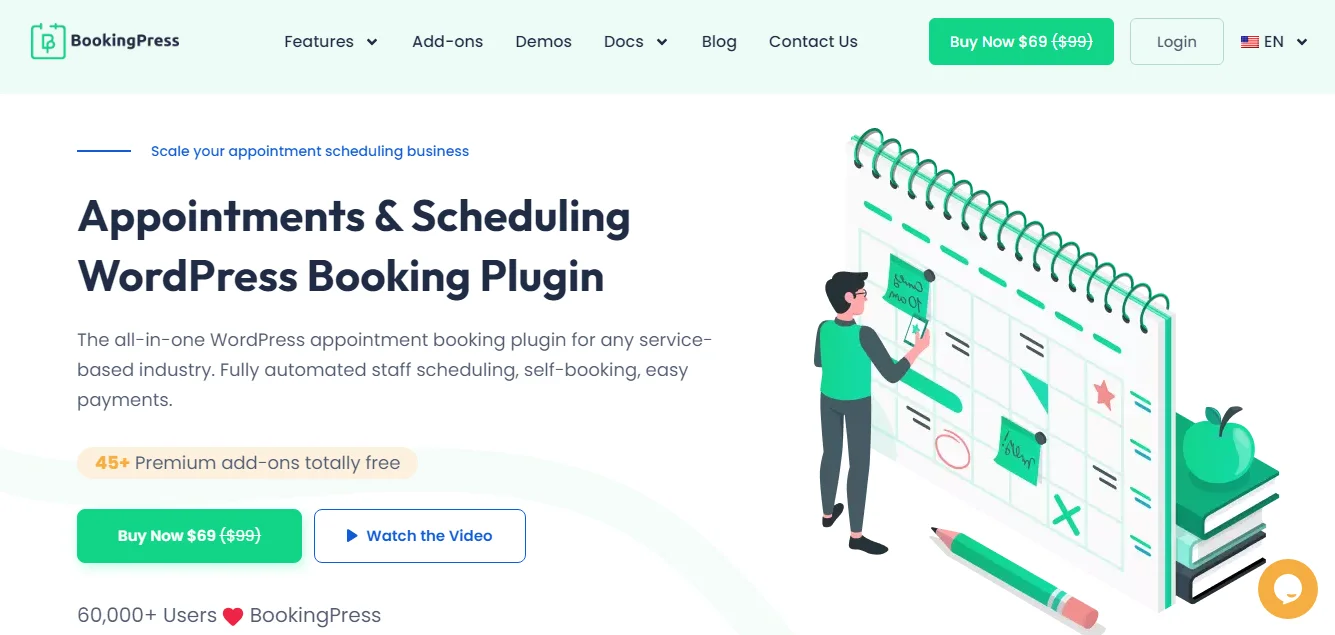How to Start a Software Business (Sell Software Online)

If you’re ready to develop your own software and sell it online, congratulations! You will benefit from the expected 8.48% CAGR growth rate of the Global Software Industry Market during the period of 2024-28. If you start a software business you will also benefit from the revenue in the software market. This is expected to rise at an annual growth rate of 5.27% resulting in a volume of USD 858.10 Bn by 2028!
We are sure you are convinced to build a software as a service startup company and wish to learn how. However, you must take into consideration all the facets to build something from scratch and sell your software online.
But don’t worry, we shall break it down for you so that it is easier for you to have a checklist and launch your startup software business quickly.
Identifying a Niche to Start a Software Company
There are various small and big tech companies that sell software’s online. You must research well before pinpointing your niche or product idea. Look at the target market’s demand, the types of software products available, how you can make your product stand out, type of business that exists, and what future development opportunities are available in the software market.
Your Software can be for gaming, service-based, applications, plugins, SaaS Products, collaboration platforms, creative design platforms, and so on. Initially, decide the type of software that you wish to sell and then funnel it down to a niche. This will be the first step to start your own software company.

Setting Up a Business Plan and Product Development
Once you have narrowed down your niche and idea of the product, it’s time to use your software engineering skills.
Define Features and Functionalities of New Software
On studying the software market intensively, you would identify your competitors and the features they offer. Now, it’s time for you to stand out. Thus, define what you want to build exclusively. What benefit would the users receive in using your product instead of your competitor’s. It can be a monetary benefit, a plan type benefit, or an exclusive feature benefit.
Ask Software Developers to Create Minimum Viable Product (MVP)
Based on your product and its features, take help of your development team, create an MVP to be tried and tested by initial users. This will help you identify initial problems and feedback to make your product better. If you are developing an application, do a Beta Run testing to gain valuable user feedback from your target market.
Setting Up a Realistic Timeline for Starting a Software Agency
Developing a Product that is ready to sell is not a one day task. You will have to go through a lot of trial and error process, get multiple feedback, get industry expert’s insights, and keep making your product better. Even after starting a software development company, you will need to update it and provide bug fixes as and when needed for a smooth run. When you intend to start up software companies, you must validate the idea for smooth launch.
Thus, it is important to set realistic timeline and milestones for your product. By what time you wish to be ready with the MVP, under what time you want to incorporate feedback, when do you plan to launch, after how many users you would provide a version update, and so on. A roadmap is essential to start a business selling software online.

Setting Up the Software Product Startup
Once you are ready with the roadmap about your product and confident in your offering, it’s time to set up your online business structure to start selling. Consider the following 4 Steps to sell software products online.
Branding Essentials for Starting a Software Company
To establish a strong presence when you start software business, a clear brand identity is non-negotiable. Invest in a memorable logo, an engaging tagline, and consistent brand colors. Ensure your branding aligns across platforms to build trust and recognition. Craft a compelling brand story to emotionally connect with your audience, and utilize testimonials or achievements to establish credibility.
Setting up the Storefront to Sell
You must make a decision as to where you want to sell your products. You can list your products on a digital ecommerce platform like CodeCanyon. It provides a marketplace to sell videos, audios, documents, graphics, photos, 3D files, and a lot more.
You can also decide to sell your software online on your own Website. You need to create and launch a Website with the help of WordPress to start software business. Get a domain name, choose a hosting provider, and install WordPress. Post that you will need to obtain necessary plugins to set up your storefront to sell.
Readying up the Documents to Start Software Business
On your online software selling website, you must have your user guides and tutorials active. When you have a user guide ready and some tutorial videos on your Website, it will provide a good impression to the onlookers. They will have some material to look at to better understand your product.
There must also be certain FAQs and Troubleshooting Resources for the new buyers and users of your software. The bank of these documents would act as a source of trust and resources to understand your product.
Choosing a Business Model for Distribution
You decide how you distribute your product. There are various options available,
- Downloadable Software
- Subscription Based Plan
- Freemium Model
- Single Time Purchase Model
- Free Trial or Demo
When you are starting a software company, a subscription business model works the best for you. Here, you can create multiple tiers of plans and cater to a wide range of audience. Initially, you can even offer a free plan or a free trial.
Customer Support Infrastructure
You must set up a support system before you make your software for sale online. The support can be in the form of email, chat/bot support, or a ticket raising system. With an established support system, your customers would know that even after making a purchase and paying money, the team will be there for query solving and updates as and when required.
This will build loyal customers and good testimonials thus, promoting word of mouth marketing after you start software business.

Targeting Right People with Market Research
To sell software online, market your software online. Creating your WordPress Website and listing your software product is just the first step. You need to make people sitting on the Web aware about your product’s presence and its utility using varied digital marketing efforts.
Start Content Marketing by providing high quality blog posts, tutorial videos on how to navigate through your software, other bonus videos for tips and tricks, and infographics. Your Content Marketing efforts should be tied up with SEO best practices to create organic traffic. This is one of the best way to sell software online.
Digital Marketing and Social Media Marketing are other interlinked ways for developing a lucrative business model. Use Pay Per Click (PPC), Paid Campaigns, Backlinking Strategies for off page SEO to target specific groups of people and attract them to your Startup software business.
You must generate leads with all these tactics and enhance your email marketing list for a wider reach. Start a Weekly Newsletter to be in touch with your users and give them up-to-date information.
Resources to Scale a Successful Software Company
When you launch your Software Startup, you can’t just think about creating one product, listing it on a Website, and selling it to earn passive income. A software selling business is an active process wherein you need to plan the future of your product as well.
- Set a timeline for updates and new releases
- Plan about the extension of your software
- Take feedback for new features or a demand for a related product and work on that
- Scale up the digital infrastructure for growth after you start software business
- Think about renting an office space, hiring developers, support staff, file for necessary patents, trademarks, etc. for a profitable business
Challenges to sustain the Software Industry
Evolving Regulations
There are evolving regulations attached to software selling which you need to follow. Some of the regulations that you need to look out for are PSD2, GDPR, and CCPA.
Looking For Right Customers
In a new business, you will have to try varied strategies to find the perfect customer base. Even when you create a product that is aimed at a specific market segment, you will have to convince them to shift technologies and adapt to a new system.
Market Saturation
The Software selling market has multiple contenders. Having an immense potential, many developers are joining this market. Thus, the competition is high and you will have to focus well to stand out. Your business expertise and marketing strategies must be put to use extensively.
Piracy and Intellectual Property Breach
A Software is your intellectual property and you must protect it by obtaining the necessary patents after the development process is complete of a product.
Timely Technical Support
Your technical support must be on time. If you have introduced your product internationally, you need to look at the time zones and be active during their work hours to support them with bugs and errors. Sometimes, this can be a 24-hour process and you might need to hire a support team to work in different shifts. It’s a long shot but if your business is scaled in the right direction, this will be a part of it.
Payment Processing
Incorporating secure payment gateways and enabling multiple ones to support international currencies is important when you start software business.
Software Compatibility
Will your software be compatible with all operating systems that the users might have? You will need to experiment and test your software product’s compatibility with multiple versions. Also while selling, you need to make necessary changes as per the client requirement.

Setting Up a Legal Structure of your Business
When you start creating a software, you are doing a startup of your business. The startup would act like a small business administration wherein you need to file business information legally. You need to get permits and licences and a document that outlines the business details.
To expand your business in the future, you need to get a tax number, file tax returns, and think of ways to get grants and loans. With quality control and assurance, your business is bound to scale for which you need to plan beforehand. So, your decisions and actions should be in the future direction of creating a lot of software and offering a product with new development at regular intervals.
Tools for the Software Development Companies
There are various tools helping you to set up your software startup. The tools help you from selling online to integrating payment gateways, licensing support, marketing, distribution, customer support, and even security and piracy. Look at the list of tools that can be explored by you.
- Explore the best online platform for selling products like Shopify, WooCommerce, CodeCanyon to list your product on an established online store front and start selling quickly.
- Payment Gateways like PayPal, Stripe, Mollie, Paystack can provide robust payment gateway support.
- Explore email marketing software like MailChimp, ActiveCampaign and HubSpot Email Marketing.
- Hubspot also provides you with a customer support software that can aid you in setting up a robust support system. You can also check out Zoho, Zendesk, and FreshWorks.
Thus, based on your requirements, you will come across various tools that can make the online software selling business a little easier for you.
Inspiring Software Development Business
BookingPress
BookingPress is a perfect example of creating your own Website as a one stop shop and one stop solution for your software. You can look at the features, study add-ons, check for documentations and video tutorials, and also access blogs from one place. You can even take chat support or opt for contacting them for various needs.
The Website is well set and the software can be purchased then and there once your queries are resolved. If you’re planning to develop your Website on WordPress, you must plan for all levels of precision that you would gradually add on.

Gaming Softwares
Look at Gamestheshop, a dedicated marketplace to sell gaming software. If you are planning to create a gaming software, look out for such marketplaces. They are frequented by gaming lovers to look out for new updates. You never know when your product hits and becomes a cult in the gaming community.
ARMember
Check out ARMember, a WordPress Plugin to create membership Websites. It has its own landing page, however, it is listed on a third party marketplace CodeCanyon. You can choose to launch your software in this way wherein it has its landing page and website, however, on purchase, it is redirected to a marketplace to handle payment gateways.
Launching a Software Business in 2024
Selling software online is a very thorough process and you must have a blueprint of the future ready when you list your first software product. This will help you in sustaining the tough competition and penetrate the market of high competition. You must stand out in some or the other way to differentiate yourself from your competitors.
FAQs to approach this Model
1) Are there any legal requirements to start a software company?
You must set up a suitable legal structure, secure IPR, and be compliant with data protection laws like GDPR and CCPA. You must also take into account legal contracts, licences, permits, and agreements as and when needed.2) How do I Price a Software?
Do market research to understand what kind of pricing is existing. You must also check what kind of product and features are available against the pricing. Now, it will be easier to put a rate on your product.3) What is the best place to sell online?
Creating your own storefront by launching a Website is the best place to sell online. However, if you are new to the technology arena and want an easy solution for short duration, you can sell online on Amazon, Etsy, WooCommerce, eBay and many more such online marketplaces.
4) What are Software Company Startup Costs?
Starting a basic software company typically costs between $5,000 to $20,000. This includes essentials like development tools ($500–$2,000), hosting and domain ($100–$300), initial marketing ($1,000–$5,000), legal fees ($1,000–$3,000), and operational costs like team salaries. Based on your planning and requirements, you can think of investing more or less for a particular task.
Related insightful articles:





Leave a Reply
You must be logged in to post a comment.